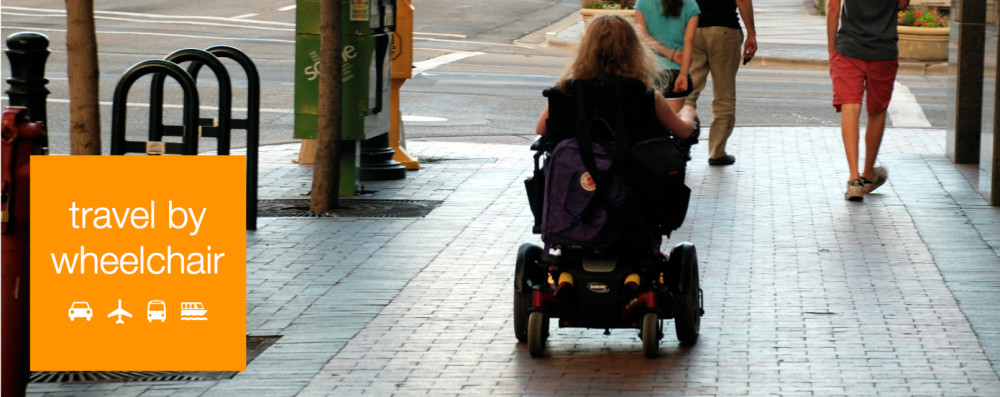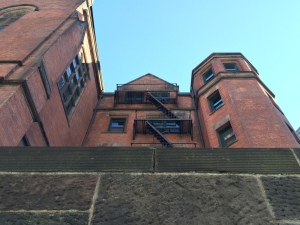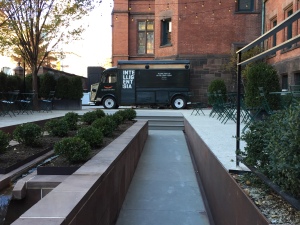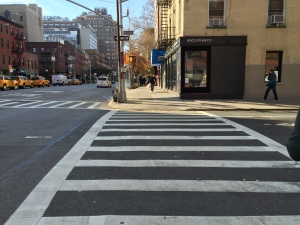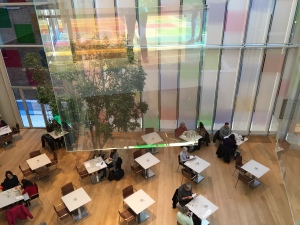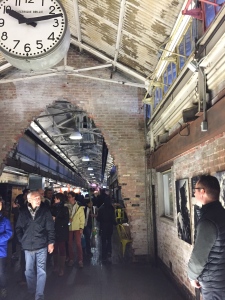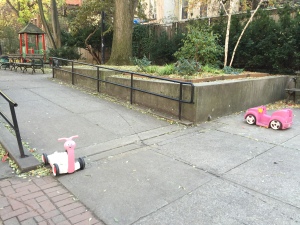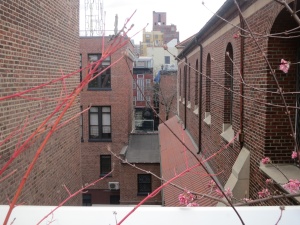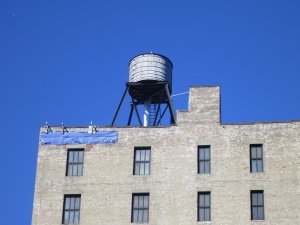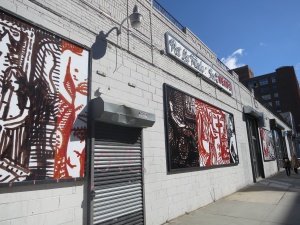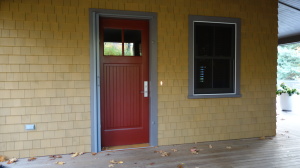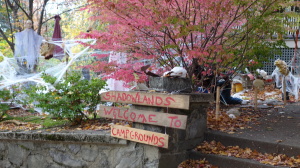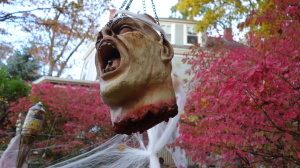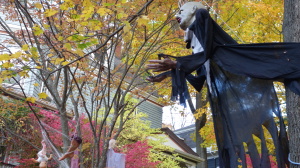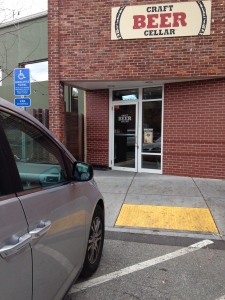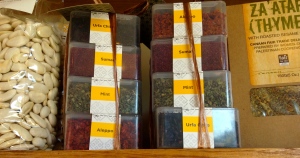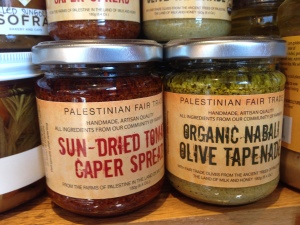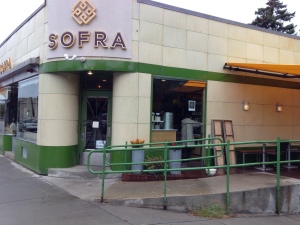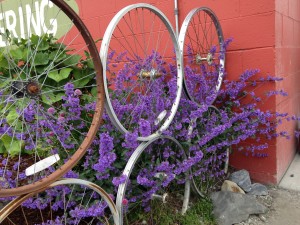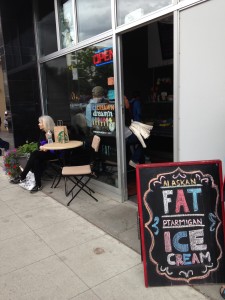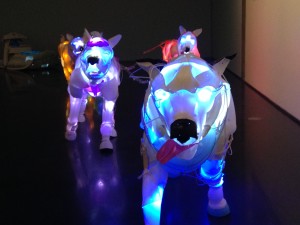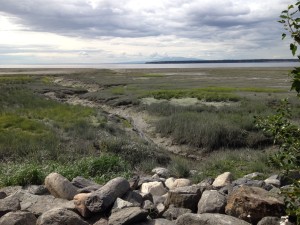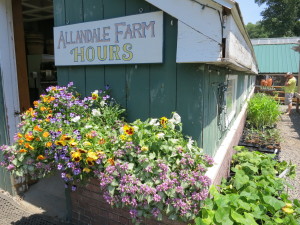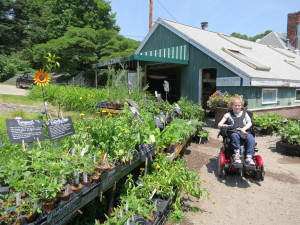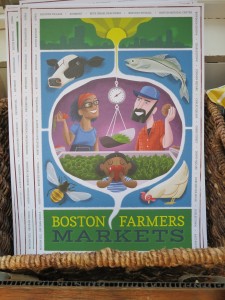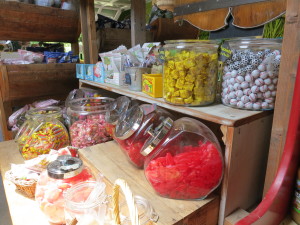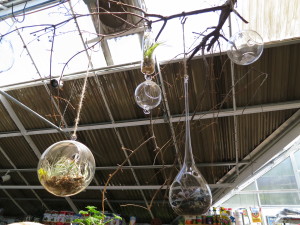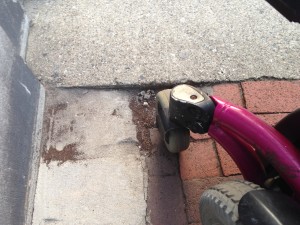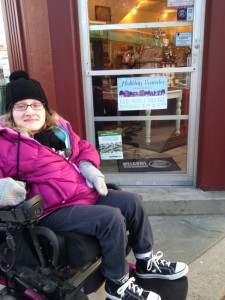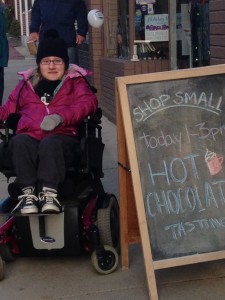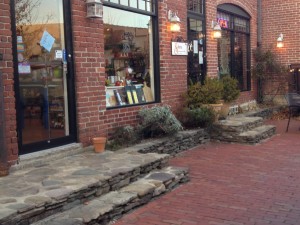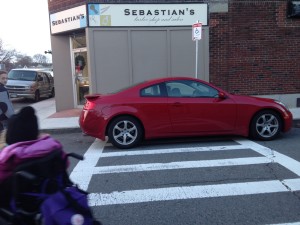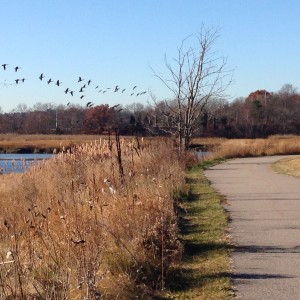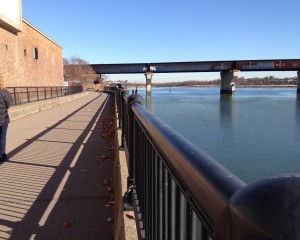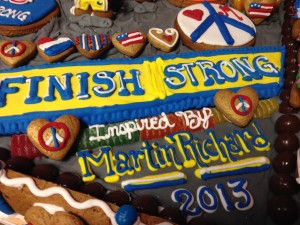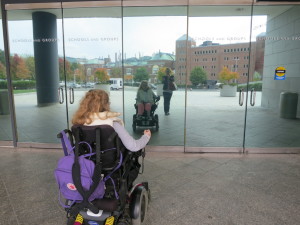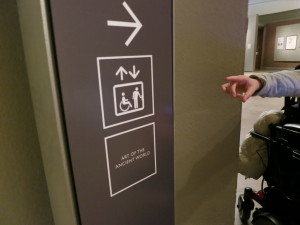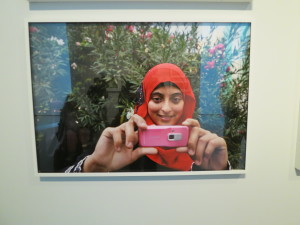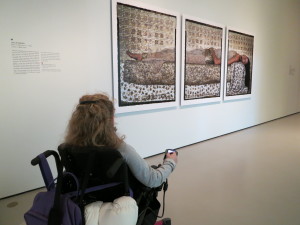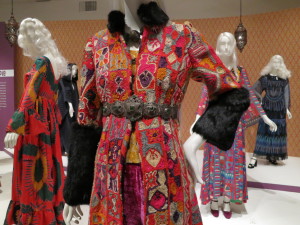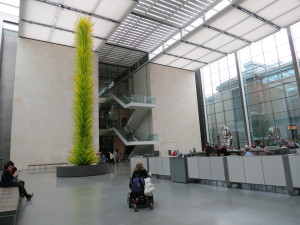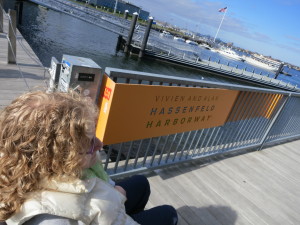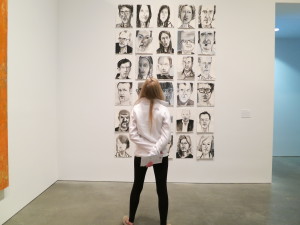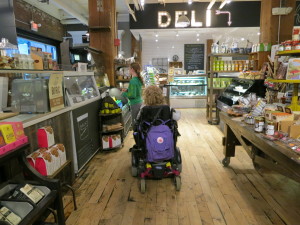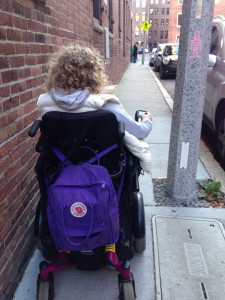Central Park, the Top of the Rock, Times Square, Museum Mile, a Broadway show, St. Patrick’s Cathedral: a quintessential New York City trip to some. I offer you here an itinerary for a slightly less touristy – but no less iconic – NYC experience that is much friendlier to the slow walker or wheelchair user.
Consider booking a room at The High Line Hotel; a fairly new hotel built on the site of the former dormitory for the General Theological Seminary in Chelsea, New York City. The developers retained the feel of the Gothic Revival structure and to me, it’s just beautiful. The price can be right too, from the low $300’s per night (up to mid $500’s).
Intelligentsia runs a fantastic espresso bar in the lobby of the hotel with really, really nice baristas, and there’s plenty of indoor and outdoor seating (if you don’t mind rubbing shoulders with a preponderance of small dogs). The good news is that you too can bring your dog (even if it’s not a service dog) for a sleepover if you so desire. There are a few downsides:
– There is only one ADA room, and the back outside courtyard (which beckons invitingly, were it warm outside) is not accessible. (There is another courtyard with cafe tables in the front of the building, and this one is accessible.)
-The bed in our room was tucked into an alcove in the room, and there isn’t enough room for a transfer. I didn’t see the ADA room, but you’d want to make sure there is clearance around the bed.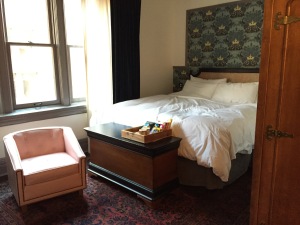
– The lighting in the room is too dim, especially in the bathroom. The manager responded to my trip advisor review saying that the lights are on dimmers; I knew that and still think the lighting is poor. The bathroom sink area has very little counter space; I’d check to find out what the ADA bathroom looks like.
Something I love about the Chelsea neighborhood: the sidewalks in this part of midtown are wide, great for walkers and wheelchairs. I walked for hours both in this neighborhood and then uptown to The Morgan Library and Museum (an accessible museum) on Madison Avenue, and every street I hit had clear curb cuts and pedestrian walk lights. You could theoretically walk or roll as far as the theater district from here (but probably not much further unless you had many hours and good weather).
Need some other ideas to while away your weekend? Let’s start with food: Across the street from The High Line Hotel is a great breakfast (and more) place, the Tenth Avenue Cookshop, which is nicely accessible from the street. Wide aisles and good spacing between some tables, as well as an ADA bathroom.
Nearby is the Chelsea Market, a restored factory, chock-a-block with accessible stores and eateries. The biggest problem here is that some of the stores (the bookstore) and diners (Friedman’s) have squeezed too much into their space. It’s also all a little precious, but I can be convinced to overlook that for a small price (like those free samples the Fat Witch Bakery doles out). Droobing (a 3D photo booth) alone would be a reason to go to the Chelsea Market (and the Droob stall is accessible!) – that and some people-watching from tables scattered through the main area. It’s all indoors and there is a big public bathroom area (with an ADA stall).
And then you could walk or roll around for hours to work up your next appetite. Right next door to our hotel, The High Line Hotel, is an accessible park, the Clement Clark Moore Park (he of “Twas The Night Before Christmas” fame); the grounds of the seminary and the hotel once belonged to the Moore apple orchard estate. Photos show a big swath of land and a grand country house; hard to imagine that here, now, in the midst of the all the concrete, storefronts and traffic. I hear that there is a reading of “Twas The Night Before Christmas” in the park on the last Sunday of Advent each year.
The Hudson River Park is a great outdoor destination, with about 500 acres of space along the west side of Manhattan. The piers in the Chelsea neighborhoods are all accessible according to this site. Another place for views is along the High Line, a converted freight line that now serves as public space, runs overhead. See this map for accessible entrances to the High Line. The park is 1.45 miles long and runs from Gansevoort Street in the Meatpacking District to West 34th Street.
The Hotel Chelsea, on West 23rd Street, is being renovated and will open in 2015. Built around 1883, it’s a landmark and is on the National Register of Historic Places. Dylan Thomas died here, Sid Vicious’ girlfriend was found stabbed to death here, and it’s been home to Bob Dylan, Iggy Pop, Patti Smith, Brendan Behan, Mark Twain and others. This iconic hotel is worth a sidewalk viewing, at least it’s open to the public.
Since the mid 1990’s, many art galleries have re-located to Chelsea (many from Soho). There are several performance venues (Irish Repertory Theater, Joyce Theater and The Kitchen), although, interestingly, none of these performance venues listed any kind of information for the wheelchair-user. The Irish Repertory Theater is accessible but needs advance notice (call the box office) to put out a ramp at the front door. The Kitchen is completely accessible. The Joyce Theater is also accessible.
History lovers take note: Chelsea features prominently in the Manhattan Project and WWII. “In the early 1940s, tons of uranium for the Manhattan Project were stored in the Baker & Williams Warehouse at 513-519 West 20th St. The uranium was removed and decontaminated only in the late 1980s or early 1990s…” (Wikipedia). For more info on the development of the atomic bomb and uranium stored in Manhattan, see this New York Times article.
And do check out a copy from the library of Up In The Old Hotel by Joseph Mitchell, that veteran New Yorker, if you plan on staying midtown and venturing downtown. Mitchell wrote for The New Yorker from 1938 to 1996, and his book chronicles (mainly eccentric) people in a place (on the margins) that is rapidly vanishing to gentrification. His characters and the streets they frequent will inform your downtown trip for sure.
